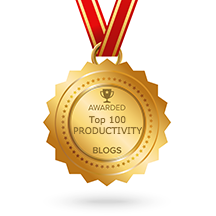Become More Powerful, Profitable and Productive. Who you are makes a difference in how you work! The search for productivity continues as we see how we can get more done with the same or less people in an environment in which businesses shrink with declining sales. An example is the post office laying off staff and reducing daily service. The impact of the web has dramatically cut their patronage, plus the postal service legacy of poor customer service that has driven customers away to UPS and other carriers. Productivity challenges come whether we cause them or not. Our task is to keep on keeping on.
By now, most of the working world is aware that we each work at different paces based on our preferred behavioral styles. Some of us rush through our work, while others ponder what's on their desks before they start work on it. Others want to collaborate with teams while others work by the rules. So how do we know our preferences?
If you agree with the old adage "the people make the place," then you'll understand why the use of personality assessments in business and industry continues to grow in popularity. Behavior assessments tap into each individual's unique "operating system," yielding key insights into people's individual drives, temperaments and motivations (e.g., why you might enjoy poring over PandL statements for hours on end, while I'd prefer to be out building relationships with customers). There is an explicit connection between how well a person fits his or her job, his or her productivity and, ultimately, a company's bottom line.
I believe these behavioral differences make a huge difference in how we work as both individuals and as a team. This is NOT about the quality of our work. It is about the nature of the process. Let us take a closer look at these behavioral differences and think how they might influence both our productivity and our approach to our work. Since I work with the DiSC program constantly, I believe it provides a good basis for understanding our differences.
There are four Classic DiSC styles: DiSC is a model of human behavior that helps to understand "why people do what they do." The dimensions of Dominance, influencing, Steadiness, and Conscientiousness make up the model and interact with other factors to describe human behavior.
DiSC is the universal language for describing the intersection of observable behavior and emotions. As someone said, knowing this language of behavior helps us manage the "how" in our lives – how we deal with problems, how we communicate with others, how we handle change, how we follow rules.
We have found that with DiSC knowledge of who you are, you learn to be more productive and work effectively with others while helping your organizations develop productive teams because they know how to communicate. It is just as helpful as knowing French would be in going to France.
Each of us has developed a distinct way of thinking, feeling and acting, which becomes our behavioral style. Our unique patterns distinguish us from one another, and express our individual identities just like our thumbprint. Each DiSC style has great strengths, and potential limitations if overused. Remember that any strength taken too far becomes a weakness.
Consider yourself in these four styles. Which one is most like you? Many of us have one dominant style and a secondary style close behind. For example, I have a high influence style but my Dominance style is right behind.
So each day, I have a little happy dance as to which style rules my day. Usually I choose Influence, because of the people orientation, but when I need to get things DONE, I move into the Dominance style.
Knowing who we are is NOT a label. It is the most insightful tool I can have in my work.
|
Productivity and Personal Behavioral Style - DISC
Labels:
assessment,
communication,
personality,
productivity
|
Bookmark this post:
|
|
Subscribe to:
Post Comments (Atom)










 This work is licensed under a
This work is licensed under a
No comments:
Post a Comment